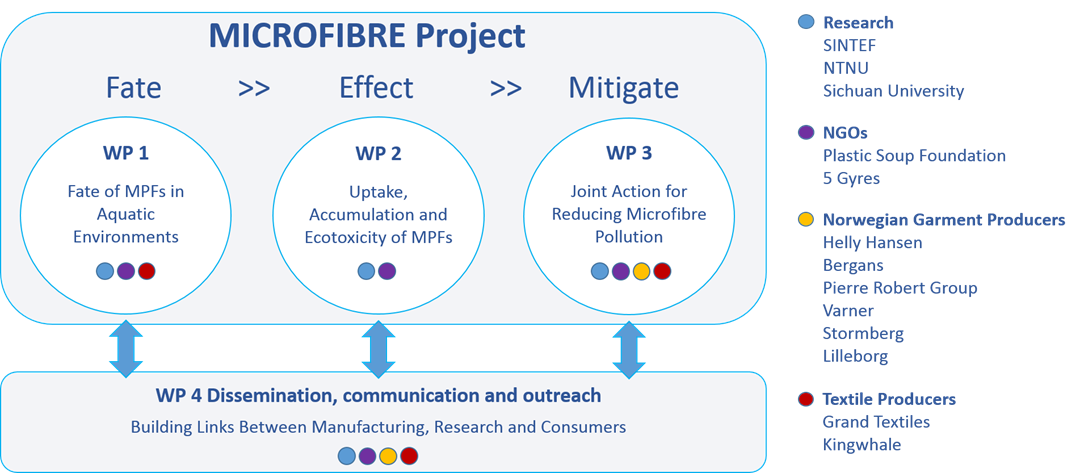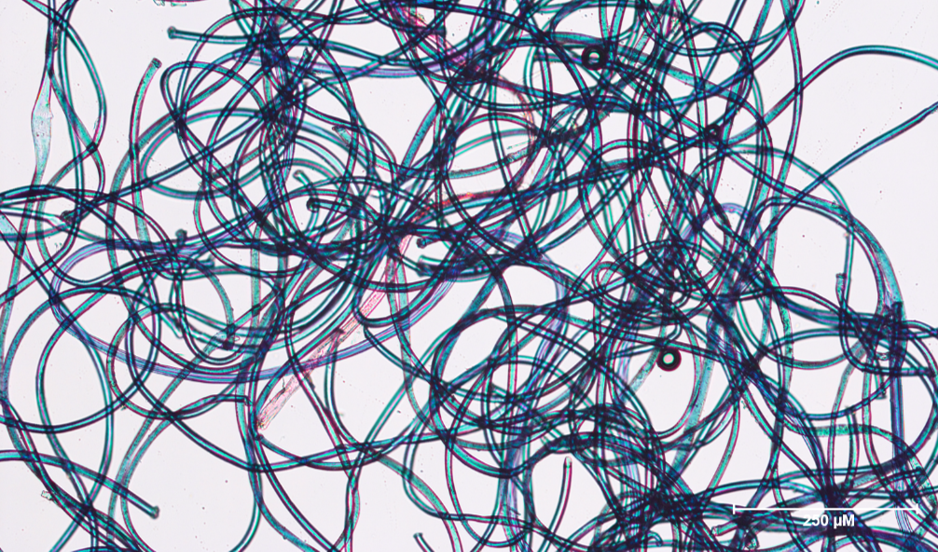There is increasing evidence for the release of MPFs from textiles into the environment where their fate (behaviour) and impacts are largely unknown. The textiles industry is keen to play an active role in understanding the nature of the problem and try to implement measures to reduce both the release and impacts of MPFs. MICROFIBRE investigates the environmental fate and behaviour of microplastic fibres (MPFs), as well as their potential for ingestion and toxicological effects on key aquatic species. A key goal of the project is to establish a decision support framework that enables stakeholders (e.g. product manufacturers, consumers and regulators) to select materials and processes that exhibit the lowest environmental impacts. MICROFIBRE brings together three of the stakeholders (research, industry and NGOs) in an attempt to apply the knowledge generated in the project to initiating the first steps in mitigating the problem of MPF pollution.

In a move away from using commercially available feedstock plastic materials, MICROFIBRE will study the partially degraded plastic materials that dominate aquatic environments. MPFs will be generated from large items of plastic debris (e.g. textiles, ropes and nets) collected from inland and marine waters. To reflect the widespread nature of MPF pollution, the project will study MPF fate and effects in freshwater, temperate marine and polar marine ecosystems. The planned research will use environmental conditions and species representing these ecosystems, including species from different trophic levels and a broad range of acute and sublethal endpoints. The role of biofouling and degradation on the adsorption of persistent organic pollutants to MPFs and the implications for subsequent toxicity will also be investigated. The project will develop and use laboratory-based methods for simulating natural physical and UV (sunlight) degradation processes.
- Research Partners: SINTEF, NTNU, Sichuan University
- Garment Manufacturer Partners: Helly Hansen, Bergans, Pierre Robert Group, Varner, Lilleborg and Stormberg.
- Textile Manufacturers: Grand Textile and Kingwhale
- NGO Partners: The Plastic Soup Foundation, The 5 Gyres Institute

MICROFIBRE is a fundamental research project funded through the Norwegian Research Council.


